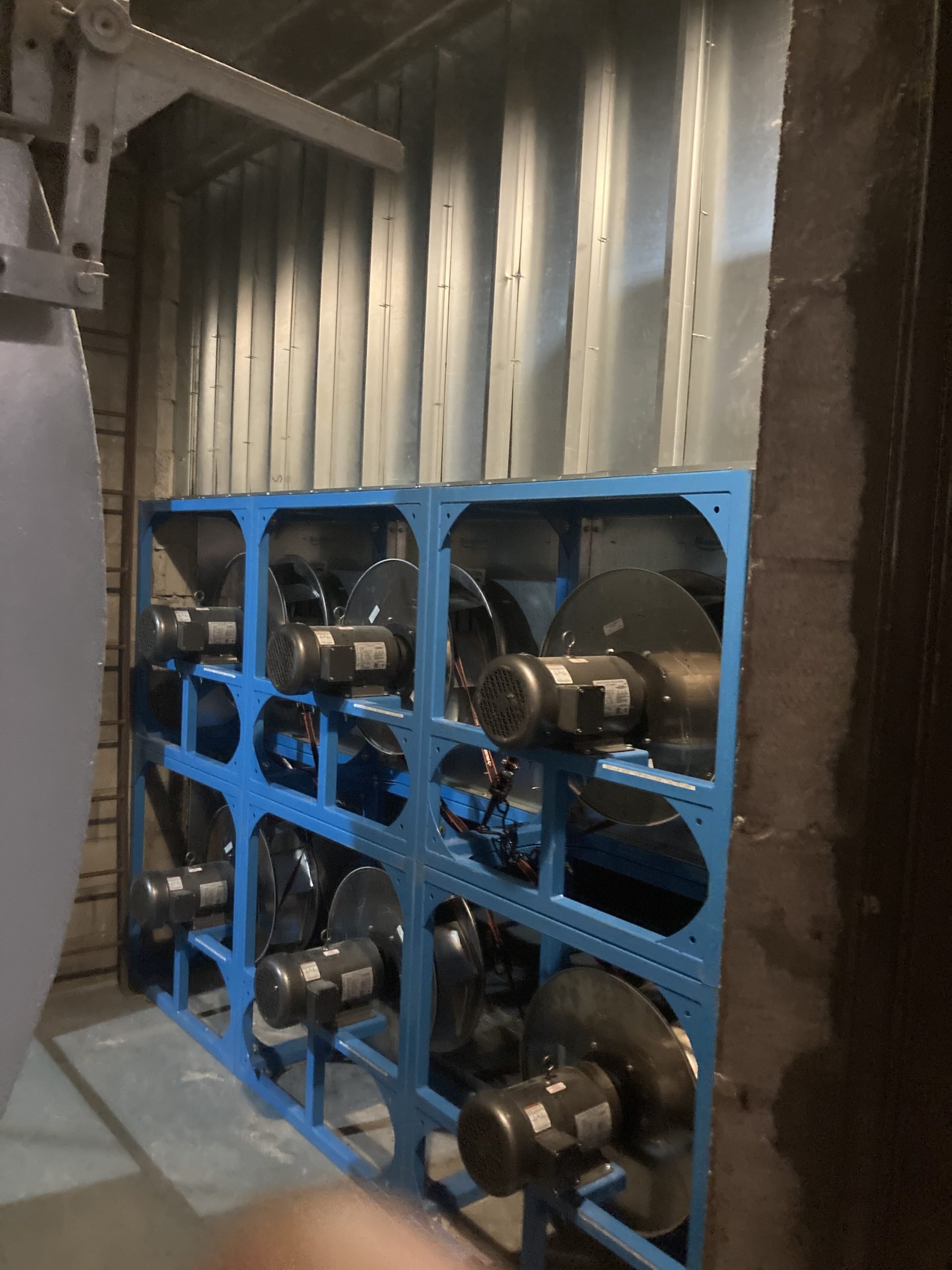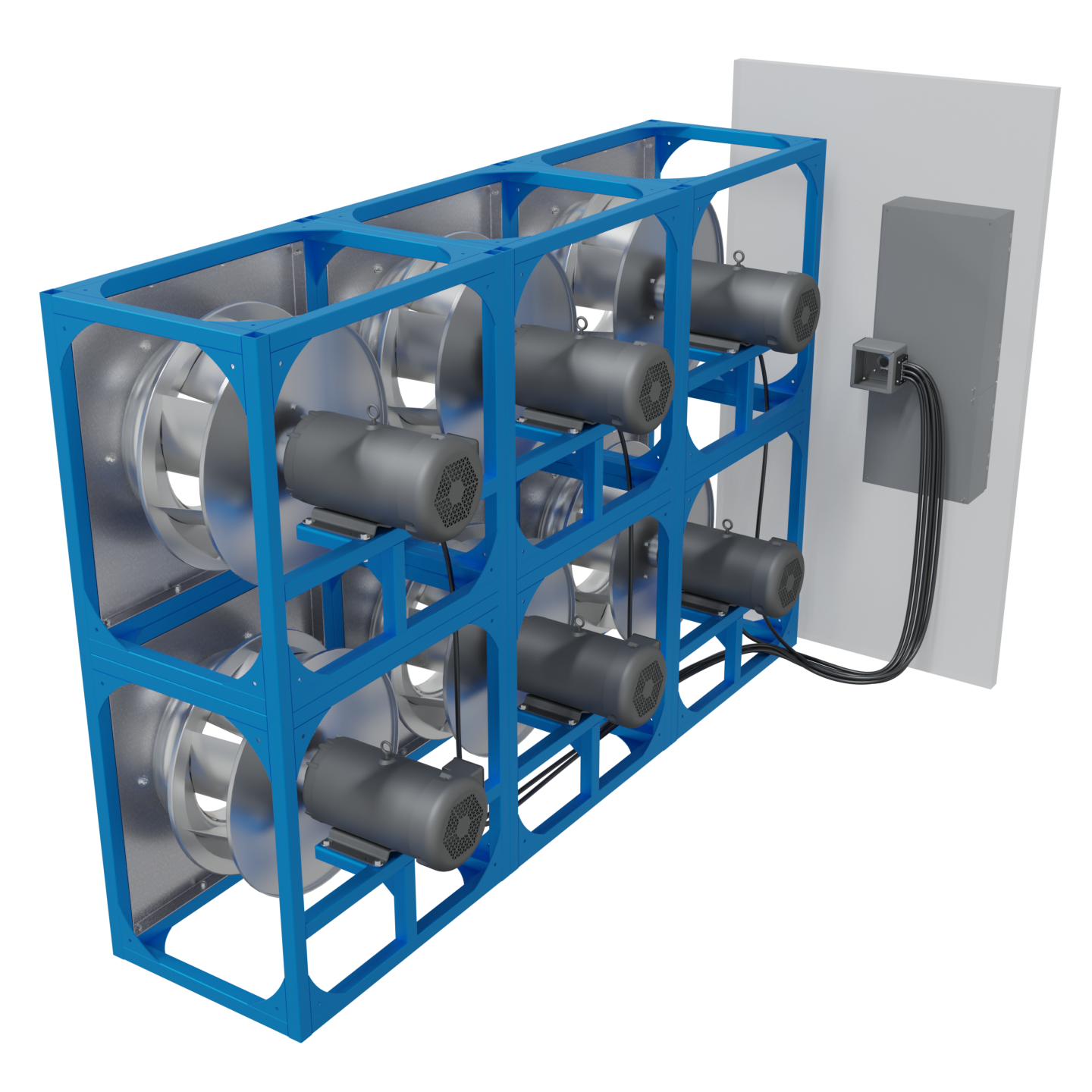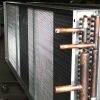In HVAC systems, fan arrays play an essential role in circulating air throughout the building to maintain comfortable temperatures and ensure proper ventilation. However, a single fan failure can cause a significant loss of airflow, leading to potential health and safety risks for occupants. That’s where redundancy comes in.
Fan array redundancy refers to the design of the system to ensure that it can continue to operate in the event of a fan failure. There are two primary types of fan array redundancy: N+1 and N-1.
N+1 redundancy involves having one extra fan than necessary to meet the system’s airflow requirements. In other words, if the system requires five fans to achieve the desired airflow, N+1 redundancy would involve installing six fans. The extra fan provides a backup in case one of the primary fans fails, allowing the system to continue to operate at full capacity. In N+1 redundancy, backdraft dampers would be closed on the standby fan and open on the primary fans during normal operation. If one of the primary fans were to fail, the dampers on the standby fan would open, and the dampers on the failed fan would close, allowing the standby fan to take over and maintain the system’s overall airflow.


N-1 redundancy, on the other hand, involves designing the fan array with extra capacity beyond what is necessary for normal operation. In the example above, an N-1 system might have five fans installed, each with slightly higher power output than is required for the system’s airflow requirements. If one of the fans were to fail, the remaining fans could ramp up to compensate for the lost capacity, maintaining the system’s overall airflow. In N-1 redundancy, backdraft dampers may or may not be used depending on the design of the fan array. If the fans are designed with extra capacity, as in an N-1 system, then the dampers would typically remain open during normal operation. If one of the fans were to fail, the remaining fans would ramp up to compensate for the lost capacity, and the dampers on the failed fan would close to prevent air from flowing in the wrong direction.
There are pros and cons to each approach. N+1 redundancy provides a more straightforward solution, as the extra fan is readily available to replace a failed fan. However, it requires an additional fan to be installed and running at all times, which can increase initial and ongoing costs. In contrast, N-1 redundancy requires less equipment but may take longer to recover from a fan failure. The remaining fans must ramp up to compensate for the lost capacity, which can result in temporary overloading and increased energy consumption.
In terms of implementation, there are several factors to consider when selecting the appropriate redundancy approach. These include the size and complexity of the building, the criticality of the equipment being cooled, and the available budget. In most cases, larger buildings with critical cooling requirements will require N+1 redundancy, while smaller buildings or those with less critical cooling requirements may be able to get by with N-1 redundancy.
Fan array redundancy and backdraft dampers are critical components of HVAC systems, particularly in settings such as hospitals or other large buildings where the loss of airflow or compromised air quality can have significant consequences. N+1 and N-1 redundancy are the two primary approaches, each with its pros and cons. By incorporating backdraft dampers into the design of the fan array, engineers can ensure that the system operates efficiently and maintains optimal air quality while providing the necessary level of redundancy for continuous operation.

Selecting the appropriate fan array redundancy approach, whether N+1 or N-1, involves carefully weighing the criticality of the building, the available budget, and the design of the fan array itself. Backdraft dampers are an essential consideration for either approach, and the configuration of the dampers will depend on the chosen redundancy approach. By taking a comprehensive approach to fan array redundancy and backdraft damper configuration, HVAC engineers can design reliable and efficient systems that provide the necessary level of redundancy for optimal occupant comfort and safety.




